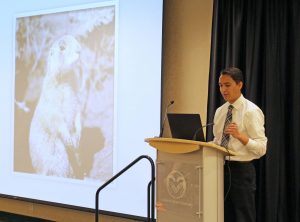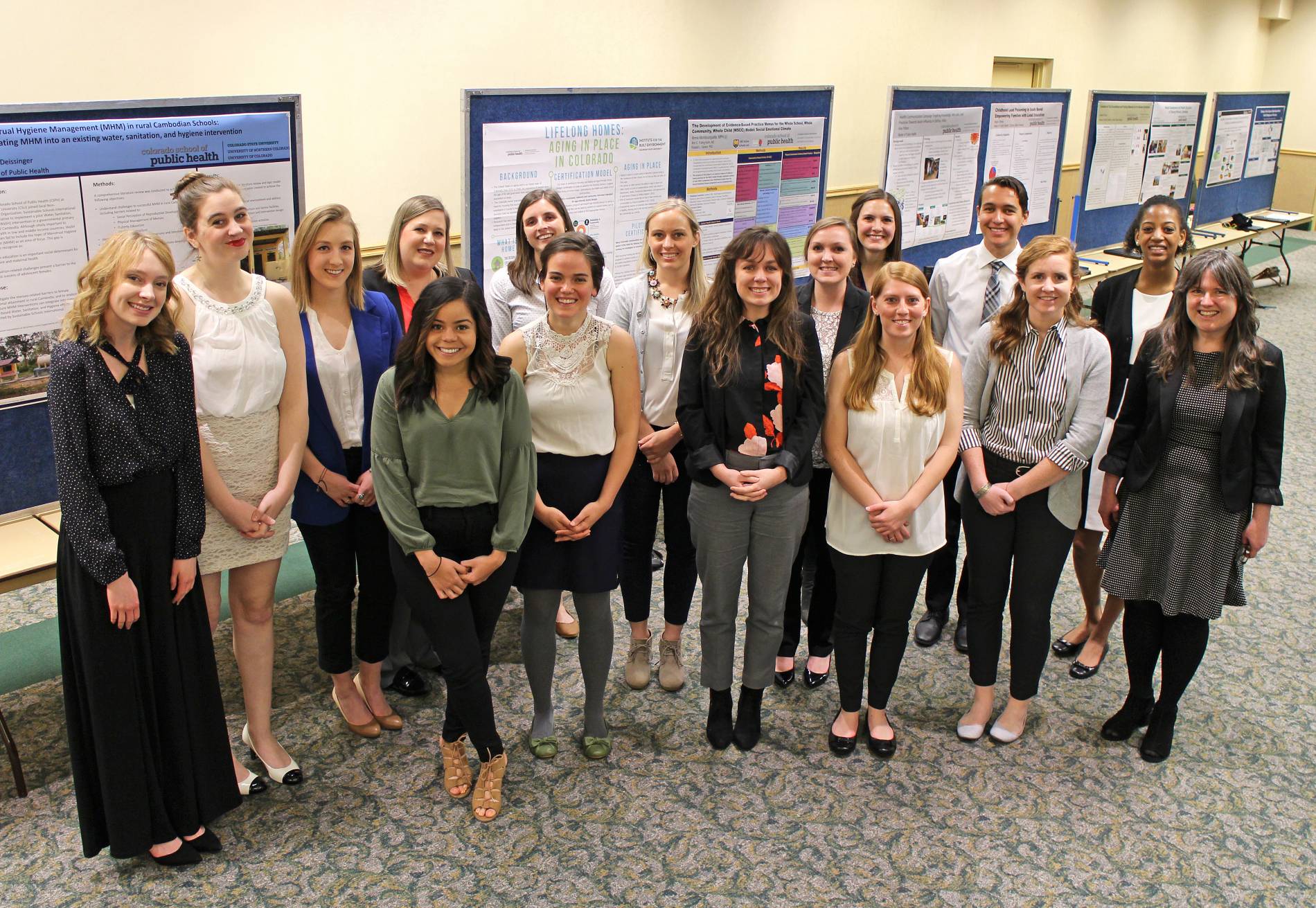If there was one common thread among the myriad of projects that ColoradoSPH at CSU MPH students presented at the recent spring capstone forum, it’s that research generally begets further research.
Consider, for example, what Connor Carrillo learned while analyzing data about plague in Fort Collins: Prairie dogs account for 74 percent of plague research but represent just 14 percent of cases. In fact, squirrels cause twice the plague cases in Fort Collins as prairie dogs, yet remain under-researched, he determined.
This warrants further research, as one insight leads to another, and the students’ MPH studies have given them the skills and tools – represented in their capstone projects – to lead the way.
While completing her capstone project on age-friendly homes with the Institute for the Built Environment, Raina Benford learned that the United States’ aging population is upwards of 75 million people “and we need to make sure we’re providing services and promoting intergenerational learning to benefit not only our seniors, but future generations,” she explained.
Nina Wickens-Bhowmik, while researching opioid use in Larimer County with the Health District of Northern Larimer County, learned that roughly a quarter of the total drug cases in Larimer  County involve opioids and that 12 percent of Larimer County residents admitted to substance abuse treatment facilities listed opioids as a concern.
County involve opioids and that 12 percent of Larimer County residents admitted to substance abuse treatment facilities listed opioids as a concern.
Faced with a rising number of opioid overdoses in Larimer County, she said her research prompted her to consider “how best to share what we’ve learned with the greater community.”
Alyssa Beck’s research of tick-borne diseases in the upper Midwest also led her to consider how to improve methods of communicating research findings with the public. The data she analyzed was culled from about 16,000 tick submissions made by anybody who wanted to participate in the program – an effort of citizen science that is an important step in bridging the gap between research and “helping people make informed prevention decisionis,” she said.
Based on her research of avian influenza in India’s Odisha state, Anna Pollard created a flyer about simple measures to prevent avian influenza that she shared with the government of the area where she did her research. It included information about minimizing contact between household chickens and wild birds, and separating birds who appear sick from the larger flock. Education, she said, is key to preventing outbreaks like the one several years ago in which hundreds of people were forced to have their chickens killed.
Learning to work with communities and populations, rather than trying to force behavior change, is among the most important facets of her MPH education and research, Michelle Fredrickson said. While researching the effectiveness of contaminant communication in Nunavut communities of the Arctic, she learned that the most effective communication offered appealing alternatives to health-endangering behavior. For example, eating the liver of ringed seals can be hazardous for women who are pregnant, she learned, so the best health communication offered the alternative of eating seal meat instead.
Each of the MPH students who presented their capstone projects noted or alluded to the fact that the element of collaboration and communication – from identifying opportunities to research and implementation – is vital to public health practice.

